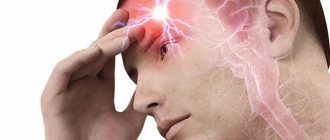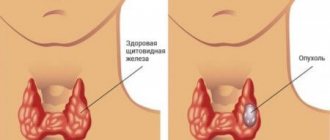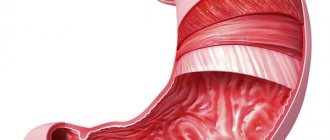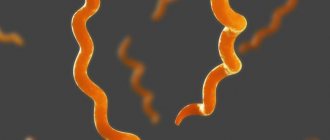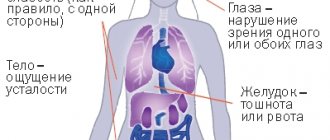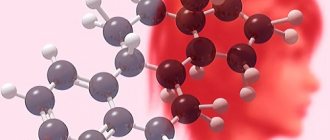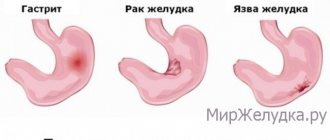There is probably no person in the world who has never experienced a headache in his life. Sensitivity to pain and its intensity vary from person to person. Therefore, research and treatment tactics are determined individually for each person, because migraine can be either an independent disease or caused by other pathologies.
The causes of headaches are as follows:
- spine pathologies;
- conditions affecting the blood vessels of the brain;
- problems with the circulatory system;
- brain inflammation;
- malignant tumors;
- infectious diseases.
Temperature during migraine is a common symptom that occurs in various diseases. The causes of a temperature of 37 degrees or higher can be infectious or non-infectious.
Non-infectious factors
The hypothalamus has a center that is responsible for the thermoregulation of the patient's body.
During normal work, the temperature of a healthy person should not be higher than 37 degrees. If for some reason the functionality of the hypothalamus is disrupted, a person begins to develop thermoneurosis. The body temperature ranges from 37 to 38 degrees, is accompanied by a headache and lasts for about two weeks. Serious causes, such as inflammatory pathologies, problems of the endocrine system, damage and infections in a person may be completely absent. It is worth emphasizing that this symptom is observed in people who are less sociable and active and have a melancholic temperament. An excellent solution to this problem can be physiotherapeutic techniques, such as acupuncture, hypnosis, hardening, auto-training, correction of sleep and work patterns. Medicines should be taken only under medical supervision.
Tumor formations
As a rule, migraines are accompanied by symptoms such as dizziness, weakness, a person loses interest in food, and because of this, loses weight. In this case, the temperature can be within 37-38 degrees. Provoking factors can be leukemia, vascular problems, formations in the kidneys, liver, lungs, and brain. You definitely need to see an oncologist.
Poisoning
When various toxic substances enter the body, infections of viral or bacterial origin can lead to intoxication. The clinical picture is very pronounced. A person suffers from migraine attacks, which are accompanied by a temperature above 37 degrees, fever, and nausea. The condition may improve after vomiting.
If the patient regularly experiences migraine attacks, he needs to lie on his side so that vomiting does not interfere with breathing. If dehydration occurs, you should immediately seek emergency medical help.
Regular intoxication can cause the development of liver or kidney pathologies. If a migraine does not go away after an attack of vomiting, this may indicate organic damage to the nervous system, the appearance of tumors, inflammatory diseases and infections.
Hypertension
Migraines, manifested by throbbing, bursting pain on one side of the head, often appear in the morning, which may indicate persistent arterial hypertension. The disease makes itself felt by weakness, fever with the appearance of a low-grade temperature of 37-38 degrees, a feeling of heaviness in the head, and tachycardia. The condition improves after vomiting.
As many people age, changes occur in their blood vessels. This is all due to junk food, lack of fiber, sedentary lifestyle, drinking alcohol and smoking. Vasoconstriction occurs against the background of fat deposition. In this case, blood stops flowing in the required volume to important organs, and to compensate for the lack of oxygen and useful components, the body must increase blood pressure.
If these symptoms appear for the first time in a person, then you must call an ambulance. If the patient has previously experienced such phenomena, it is imperative to have with you the required amount of medications prescribed by the doctor and monitor blood pressure every half hour. You should visit a doctor soon.
Many representatives of the fair sex experienced a condition called dysmenorrhea. This is a cyclical disease during menstrual days, when pain in the lower abdomen is simply impossible to tolerate.
The signs are as follows:
- severe weakness;
- nausea accompanied by vomiting;
- Strong headache;
- salivation;
- fever;
- the temperature can be from 37 to 38 degrees.
Why are these symptoms observed? Only a doctor can give the correct answer to this question. To eliminate pain, analgesics, nonsteroidal anti-inflammatory drugs, and triptan drugs are prescribed.
Migraines, accompanied by an increase in temperature, can occur against the background of existing problems with the spine, circulatory problems in the muscles and intervertebral discs. This is often observed with myogelosis and osteochondrosis of the cervical spine. In connection with the development of these pathologies, cervical migraine occurs.
You can alleviate symptoms with the help of a healthy lifestyle and complete abandonment of bad habits. It is necessary to avoid hypothermia, walk in the fresh air, and do therapeutic exercises.
Basic principles of migraine treatment
The treatment regimen for migraine cephalgia involves the following measures:
- relief of a migraine attack with pharmacological drugs;
- prophylactic use of migraine medication;
- psychotherapeutic influence, hypnosis, autogenic training;
- acupuncture;
- exclusion or minimization of risk factors.
Drug treatment
How to relieve a migraine? Drug therapy may include the following migraine medications:
- anilides in combinations, for example: Solpadeine;
- salicylic acid derivatives, for example: acetylsalicylic acid;
- non-steroidal anti-inflammatory drugs, for example: ketoprofen;
- psychostimulants, for example: caffetamin;
- alpha-blockers, for example: Dihydergot;
- sedatives - anxiolytics, for example: Relanium;
- serotonin receptor agonists, for example: eletriptan;
- beta blockers, for example: metoprolol (Metoprolol);
- antidepressants, for example: amitriptyline (Amitriptyline);
- calcium channel blockers, for example: verapamil (Verapamil).
It is worth noting that at the current stage of development of medicine it is not possible to completely eliminate the disease, and for more than 30% of patients the prescribed treatment does not bring the desired effect. However, timely and consistent preventive use of migraine tablets can reduce the frequency of attacks and reduce the intensity of cephalgia.
Infectious factors
High and low-grade fever during migraines can make itself felt in infectious pathologies. The cause of this may be infections caused by streptococci, E. coli and other pathogens. Infections that cause adnexitis are constant companions of a woman’s body and are activated only in the process of a decrease in the immune system. The mechanism of occurrence of the disease is intrauterine surgery. Clinical manifestations are similar to cold symptoms.
There are many reasons for increased temperature during migraine. Self-diagnosis can only worsen the condition, so be sure to consult a doctor.
specialist
Diagnosis of the causes of migraine
The cause of migraine attacks must be determined.
Self-administration of medications without control can lead to an intensification of the attack. They will be useless if used incorrectly. Usually the therapist refers the patient to a neurologist. A specialist can diagnose migraine and determine its type based on symptoms, frequency of attacks, and the presence of migraine in women of previous generations.
In difficult cases with severe forms of migraine, an MRI of the brain and cervical spine is performed. The method of rheoencephalography is also used. It allows you to assess the condition of the blood vessels in the brain. Electrodes are attached to the head, and then the electrical resistance in the vessels is measured, which depends on the volume of blood passing through.
Discussions: headache and temperature 37
- Hello!!! For a week now the temperature has been 37-37.5 with severe headaches in the back of the head and temples, what could this be and which doctor is best to see?
Hello. Five days ago I just had a headache for a long time. Four days ago, before going to bed, the temperature was 37.2, headache, aching muscles and chills. In the morning the temperature is 37.4 and headache...
Hello! I have a very sore throat, headaches, severe runny nose, I sneeze, but there is no temperature (more precisely, a very low 36.9-37.0). Will they give me sick leave?
Good afternoon. Please help me figure it out. I have been bothered for 4-5 days by a throbbing headache, abdominal pain (at times acute) and a temperature of 37-37.7. The stool was liquid twice the entire time...
Hello. It all started with a normal cough and a temperature of 37. The cough went away only after 1.5 months, but the temperature remained. And it continues to rise in the daytime from 37-37.3. In the evening…
Hello! please advise! I get bronchitis very often! the symptoms are always the same: it all starts from the throat and goes to the bronchi! There is never any temperature as such, but it stays at 37.2!…
Hello. I have been having a continuous headache for three days. The pain appeared, it seems to me, for no reason. The pain is constant, when I sit or lie down, the pain is moderate. When I start...
Hello! My son is 4 years old, last night his temperature rose to 38, the child complained of a headache. She gave me Nurofen and my temperature dropped. Today I stayed at 37.6-37.8 all day, I didn’t knock it down...
Dear doctors, I would like to get advice from you. My grandfather is 85 years old. He has been sick for 2 months now. At the beginning of December, he developed a temperature of 37.2-38, which lasted for a month. He was worried...
Hello. I'm 15 weeks pregnant. I fell ill with acute respiratory infection for 5 weeks. runny nose, throat, weakness, etc. then it became easier, and then the same thing happened again. I'm currently worried about a runny nose...
Forms and manifestations
There is an assumption that isolating the symptoms of a migraine attack with visual impairment as a separate one is erroneous.
The ophthalmological scenario may be the initial stage of a classical pathology that has not yet developed.
An example of inhibition of the development of the disease can be the so-called cyclic form, in which symptoms manifest themselves only as convulsions.
A long period of remission after minimal manifestations indicates a halt in the development of migraine.
This is not a final disappearance, but a partial elimination or reduction of the provoking factor.
- Simple migraine is a more common phenomenon, which is also accompanied by pathological manifestations in the area of the eyeball and double image, but the spectrum of damage affects the gastrointestinal tract, a nausea and vomiting reflex is caused, and disturbances in verbal function may also be present. It is not by chance that it received the name classical, because during the course of the disease, during an attack, an indispensable set of symptomatic manifestations is present.
- Cervical migraine, unlike other forms, is caused by vertebral artery syndrome. Unlike simple, it leads to stroke in severe forms of migraine and syndrome. But the causes of cervical migraine are also divided into two groups: vertebrogenic and non-vertebrogenic. In the first case, osteochondrosis is recognized as the main factor, in the second, it cannot be determined at a reliable level. The disease is not always found on the standard list of common types, although compared to some of them, it happens quite often. The reluctance to put her on a par with everyone else is caused precisely by vertebral reasons, which are more than obvious. Non-vertebral cervical migraine occurs much less frequently. But if the retinal and ocular ones stand out (in which sometimes signs of serious pathologies of the organs of vision appear), then the cervical one should also be included in the general list.
- With menstrual migraine, two forms of progression are distinguished; they are united not by the passage of menstruation, but by the relationship with changes in hormonal levels. Pure - usually occurs two days before the start of menstruation, and those associated with the passage of the female cycle can occur at different periods (during ovulation, changes in hormone levels).
- In ocular migraine, the timing of a migraine attack is associated with a lack of pupillary symmetry or the inability to move the gaze. Headache is the background against which muscle paralysis appears in the area of the eye or pupillary sphincter. Symptoms of migraine, differentiated into a separate form, as in the case of the neck, may be due to the presence of severe pathology, eventually leading to an aneurysm, or indicating an early undiagnosed tumor. But with approximately the same frequency, negative symptoms also appear without a reason, which was not identified (or could not be identified) during the examination.
- Young women sometimes develop Bickerstaff migraines. It is characterized by neurological symptoms. From the moment the attack begins, the clinical picture is acute and uncharacteristic. The headache is localized not to the side, but to the back of the head, and some women may experience two characteristics (speech disorder and loss of hearing function, dizziness and tinnitus). In severe form, paresis and ataxia, paresthesia and double image may occur. The presence of basal migraine is often interspersed with attacks with aura. The developed treatment methods in such cases have virtually no effect on optimizing the condition.
- Symptoms of migraine in women with the half form of the pathology are inherited. Their unpleasant feature is concomitant left paresis. During the next attack, numbness and tingling in the extremities on the left can develop into more serious manifestations, because the initial symptoms are associated with sensorimotor disorders. In this case there is a risk of progression of symptoms, and this is clearly not a form of g43 migraine in which the cause cannot be determined.
- Symptoms of migraine in women with mental variation are expressed in the appearance of mental disorders. It is also known as dysphrenic and can be combined with neurological symptoms. Despite a migraine attack, there are pronounced manifestations of a mental disorder, with individual phobias and manias, disorientation in space, agitation and hallucinations. The presence of a psychic form can also be determined using hardware studies. During the period while signs of migraine are observed, changes in the bioelectrical activity of the brain can be detected on the electroencephalograph, and they are quite significant.
- The appearance of a headache attack can be observed with cardiac arrhythmias, and although this is often called cardiac migraine, it is a distinctive symptom of a cardiovascular disorder of a certain etiology.
- Signs of migraine in a woman with retinal damage are accompanied by sudden blindness or unilateral impairment of visual function. There are no signs of migraine at the onset of the attack, and all visual abnormalities recede with the development of headache. There is a completely reasonable explanation for this mechanism - a sudden spasm of the vessels providing blood supply to the eye. But there is no explanation yet for why the spasm occurs.
It is believed that the reason for this is the same genetic predisposition, because in women, retinal migraine can be a continuation of the usual classic one, known as g43 migraine. However, approximately half of the cases of development of the condition are associated with systemic diseases - atherosclerosis or epilepsy, lupus erythematosus and depression.
In this series of reasons it is difficult to find a system and relationship. It is impossible to understand why exactly reticular migraine attacks are so dangerous?
Visual migraine occurs with depression, epilepsy or sickle cell disease.
Directory of diseases
- Description of a sore throat Forms of a sore throat Complications of a sore throat Diagnosis of a sore throat Treatment of a sore throat Description of a sore throat Sore throat or acute tonsillitis is an acute infectious disease characterized by inflammation of the lymphoid formations of the peripharyngeal ring. Most often, the palatine tonsils, located on the sides of the entrance to the pharynx, are affected, but inflammation can also occur in other tonsils - lingual, laryngeal, nasopharyngeal. If these tonsils become inflamed, they speak of lingual, laryngeal...
Contents: Causes of rhinitis General signs of rhinitis Acute rhinitis: symptoms and periods Purulent rhinitis Chronic rhinitis: causes Vasomotor and allergic rhinitis How to treat rhinitis? Treatment of rhinitis with folk remedies Prevention of rhinitis Rhinitis is an inflammation of the nasal mucosa, which can be either an independent disease caused by microbes or occur as a result of hypothermia. Rhinitis is often a symptom of a number of infectious diseases, such...
Contents: Causes of acute laryngitis Is laryngitis contagious? Symptoms of acute laryngitis Chronic laryngitis Types of laryngitis Acute laryngitis: treatment in adults Laryngitis is an inflammatory process involving the mucous membrane of the larynx. This disease is usually associated with a viral or bacterial infection and can be regarded as an independent inflammatory process or as a complication. Causes of acute...
Contents: Causes and classification of pharyngitis Types of acute and chronic pharyngitis in children Symptoms of pharyngitis in children Diagnosis of pharyngitis Treatment of pharyngitis in children Prevention of acute and chronic pharyngitis in children Pharyngitis in children is a fairly common disease that can occur in a wide variety of forms. The disease got its name from the Latin word “farings” - pharynx. Treatment of pharyngitis in children is aimed at combating...
Contents: Causes and stages of rhinitis in children Features of rhinitis in children Acute rhinitis: treatment in children Chronic rhinitis in children Allergic rhinitis in children Inflammatory disease of the nasal cavity - rhinitis - is quite common and accounts for up to 30% of all ENT diseases in children. It is this pathology that usually causes disruption of free nasal breathing. Rhinitis in children is manifested by nasal congestion, headaches, constant sneezing, loss of...
Incubation period Stage of primary manifestations (acute febrile phase, or initial) Stage of primary manifestations (latent (hidden) period) Stage of primary manifestations (generalized lymphadenopathy) Stage of secondary diseases Terminal stage (or AIDS) Incubation period After the virus enters the human blood, the first stage begins stage of HIV infection - incubation period. This is the period of time between the moment a person becomes infected with the virus and the onset of...
Diagnosis of any disease begins with studying the patient’s complaints and identifying the leading one. The combination of symptoms, such as a sore throat, headache and temperature of 37-39 degrees, is present in many diseases, which complicates diagnosis. An important role in such cases is played by additional signs, as well as the results of an objective examination and laboratory diagnostics.
Since both viruses and bacteria take part in the development of these diseases, therapeutic approaches are different. To prescribe the correct treatment, it is necessary to clarify the nature of the disease and determine the causative agent. To do this, you should collect all the signs and carry out a differential diagnosis.
Features of migraine manifestations
This need is dictated by two reasons:
It is impossible to assess the importance of timely diagnosis of migraine - the sooner specialized treatment for this disease is started, the greater the likelihood that it will be possible to achieve stable clinical remission of the pathology in question.
Agree, if a person is aware of the variety of clinical forms of migraine, then it will be much easier for him to suspect that he has this disease and go to see a neurologist, rather than look for the reasons why his head may hurt.
Otherwise, the patient will try to associate the symptoms with “changes in weather conditions,” or some other “reasons” that have nothing to do with the condition that has arisen. Lack of adequate treatment can lead to severe complications. Migraine differs from NCD (neurocirculatory dystonia) also in that it can cause serious consequences;
The therapeutic approach to the treatment of different forms of this disease is somewhat different - this is perhaps the most important point in terms of confirming how important it is not only to distinguish a migraine from a regular headache, but also to determine the type of the disease;
If a migraine attack is recognized at the warning stage, it can be stopped even before the headache appears.
Many people believe that if you just have a headache, then it’s a migraine. However, in reality, everything is completely different - as a rule, the causes of headaches are either hypertension or neurocirculatory dystonia (although these diseases have some common part of the pathogenetic mechanism).
ARVI
ARVI is the most common disease, in the development of which about 200 different viruses can be involved. In this case, the clinical picture is similar and is characterized
- acute development of the process;
- malaise;
- muscle pain and joint aches;
- pain when turning the eyeballs;
- runny nose with copious mucous discharge;
- nasal congestion;
- dry cough;
- development of hyperthermia up to 38-39 degrees.
As for pain in the throat, the sick patient describes it as soreness and scratching. An objective examination of the throat cavity reveals hyperemic mucosa, somewhat swollen tonsils, and the absence of purulent deposits on them.
Enlargement of regional lymph nodes is not typical for ARVI.
This symptom can develop only in the presence of complications, otitis media, tonsillitis.
The largest number of cases of ARVI is observed in the autumn-winter period. In some cases, the prevalence of the disease takes on the character of an epidemic. Under these conditions, it is not difficult to clarify the diagnosis. The diagnosis of ARVI is also facilitated by the fact that after 5-7 days there is a regression of clinical signs and the patient recovers.
Migraine during pregnancy
During pregnancy, migraine attacks may occur more frequently and more intensely. or stop bothering altogether. The development of the situation depends on the reasons that provoke migraines before pregnancy, as well as changes in hormonal levels at the time of pregnancy.
Many pregnant women begin to experience migraine pain due to natural changes in the functioning of their major vital systems. In the early stages, attacks are provoked by a surge of hormones, narrowing of blood vessels and impaired blood flow through them as a consequence, dilation of blood vessels and pressure on nearby nerve receptors, and dehydration. In recent months, the body is preparing for childbirth, and the spine and the main arterial vessels passing in the spinal region are especially stressed.
Migraine attacks are especially painful for pregnant women, especially since the choice of drugs to relieve pain is strictly limited. During this period, a woman is prohibited from taking special anti-migraine medications, as well as most analgesics. For acute pain, the gynecologist can prescribe Ibuprofen, Panadol or Paracetamol in a small dosage, but abusing them is also highly discouraged. You can try to relieve the attack with folk remedies, but their use also needs to be agreed with your doctor.
Infectious mononucleosis
One of the factors that makes it possible to differentiate infectious mononucleosis is the duration of the disease. Clinical signs persist for 10-15 days. In some cases, for several weeks, which distinguishes the disease from ARVI.
This viral infection is also characterized by a sore throat, malaise, weakness, headache and temperature of 37-38 degrees. A constant symptom is redness and enlargement of the tonsils. Additional symptoms that aid in diagnosis are
- enlargement of regional, inguinal and axillary lymph nodes;
- the presence of a rash;
- enlarged liver and spleen.
To confirm the diagnosis, laboratory diagnostics are used to identify positive liver tests and changes in the general blood test. Serodiagnosis of infectious mononucleosis is also informative.
Childhood infections
Childhood infections also cause symptoms such as malaise, headache and sore throat. For adults, such diseases are atypical, but they do occur and are characterized by a severe course with pronounced symptoms of intoxication. Hyperthermia
can reach 39 degrees.
A mandatory symptom of childhood infections, measles, chickenpox, scarlet fever, rubella, is the presence of a characteristic rash.
The epidemiological factor plays an important role in the diagnosis of the disease. The patient is contagious throughout the entire treatment. Given the airborne route of transmission, you can become infected by talking or coughing. In cases of chickenpox, the contagiousness of the disease is so high that you can get sick while in adjacent rooms with an infected patient.
Among infectious processes, angina occupies a special place due to the danger of this disease in relation to early and late complications. The cause of its occurrence is a bacterial pathogen, hemolytic streptococcus. It can be clarified by bacteriological examination of a scraping from the tonsils and a smear from the throat. In addition, seeding the contents helps determine the sensitivity of the pathogenic bacterium to antibiotics.
Associated symptoms in this case are the following:
- significant deterioration in general condition, severe weakness;
- increase in body temperature up to 39 degrees;
- severe pain and enlargement of regional lymph nodes.
Patients describe the sore throat as constant. It intensifies when swallowing and radiates to the neck and ear. Due to severe pain, it is difficult to open the mouth. The phenomena of intoxication are pronounced. Patients are concerned about severe weakness, chills, and headache.
Pharyngoscopy is of great help in diagnosing this condition. An objective examination of the throat cavity reveals enlarged, swollen tonsils. With follicular and lacunar tonsillitis, the presence of dirty gray discharge is noted, filling the corresponding structures of the tonsils.
The purulent form of tonsillitis is characterized by a severe course.
Temperatures can reach 40 degrees. Changes in the general blood test are noted, indicating the development of a bacterial process: an increase in ESR to 30-40 mm/h, leukocytosis to 15-20, a shift in the blood count to the left.
Therapy: methods and methods
In search of effective treatments for migraine, many clinical studies have been conducted and a significant number of medications have been developed.
WHO pays great attention to the disease, which is included in the list of the most common pathologies leading to disability. However, there is no clear answer on how to treat migraine in women.
Medicines with side effects are used, which do not always produce results, since after the attack is stopped, it can return like a pendulum.
Some of them belong to groups that, if consumed in excess, can cause a separate form of the disease or lead the disease to a transformed form, with daily headaches.
There is a theory that migraines in women can be treated by avoiding chemicals in modern products, prescribing a strict diet, getting rid of infections and normalizing sleep.
It talks about methods of treatment by changing the environment, changing lifestyle and avoiding stress. alternative medicine tries to treat women with folk remedies.
It is believed that the use of certain doses of butterbur, ginger or ginkgo biloba over a long period of time can prevent the development of attacks.
However, there is little reliable information about this, and in the treatment of migraines, other than medications and attempts to eliminate pain symptoms with medications, there is still little attempt to do.
According to supporters of a healthy lifestyle, treatment of migraine in women can be carried out using complexes of physical therapy, manual therapy, and physical exercises.
But these tips should be taken selectively, practiced only under the supervision of a doctor and strictly prescribed.
Those who want to do this on their own should remember that there is also a form of the disease associated with physical effort and not manifested under other circumstances.
After an attack, it is recommended to try to connect your condition with pathologies existing in the body, consult a doctor, and try new methods of stabilizing your own body system.
But we should not forget that migraine symptoms in women appear under the influence of provoking factors. Their elimination is one of the most successful methods in the treatment of pathology.


